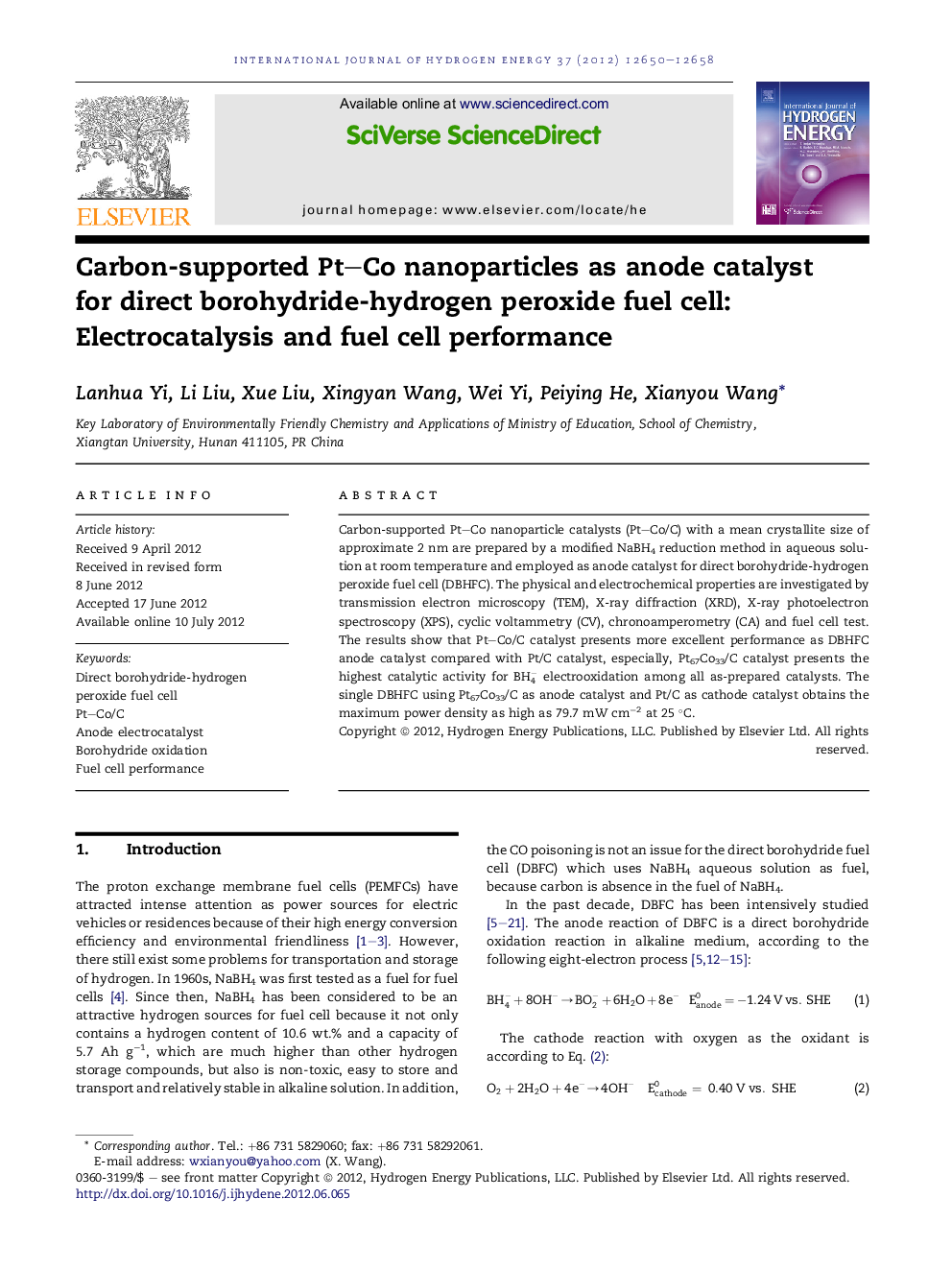| کد مقاله | کد نشریه | سال انتشار | مقاله انگلیسی | نسخه تمام متن |
|---|---|---|---|---|
| 1271102 | 1497552 | 2012 | 9 صفحه PDF | دانلود رایگان |

Carbon-supported Pt–Co nanoparticle catalysts (Pt–Co/C) with a mean crystallite size of approximate 2 nm are prepared by a modified NaBH4 reduction method in aqueous solution at room temperature and employed as anode catalyst for direct borohydride-hydrogen peroxide fuel cell (DBHFC). The physical and electrochemical properties are investigated by transmission electron microscopy (TEM), X-ray diffraction (XRD), X-ray photoelectron spectroscopy (XPS), cyclic voltammetry (CV), chronoamperometry (CA) and fuel cell test. The results show that Pt–Co/C catalyst presents more excellent performance as DBHFC anode catalyst compared with Pt/C catalyst, especially, Pt67Co33/C catalyst presents the highest catalytic activity for BH4− electrooxidation among all as-prepared catalysts. The single DBHFC using Pt67Co33/C as anode catalyst and Pt/C as cathode catalyst obtains the maximum power density as high as 79.7 mW cm−2 at 25 °C.
► Pt–Co/C electrocatalysts were synthesized in a facile way by a modified NaBH4 reduction method.
► The average particle size of Pt–Co bimetallic nanoparticles is about 2 nm
► The Pt–Co/C exhibits much higher electrocatalytic activity than Pt/C toward the direct electrooxidation of BH4−.
► The performance of DBHFC using Pt–Co/C as anode catalyst was reported.
► The maximum power density as high as 79.7 mW cm−2 was obtained at 25 °C.
Journal: International Journal of Hydrogen Energy - Volume 37, Issue 17, September 2012, Pages 12650–12658